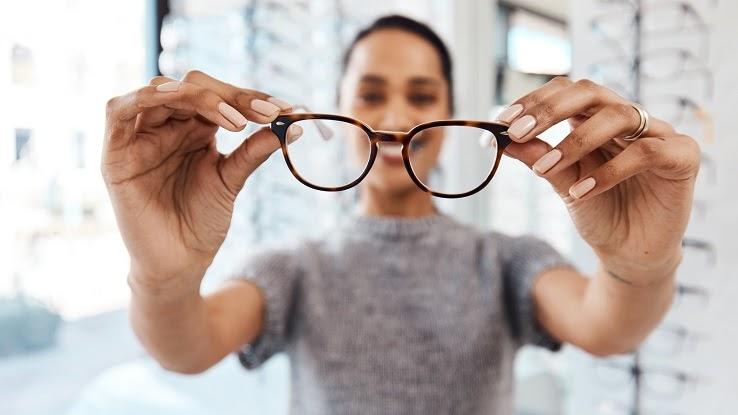
If you only buy eyeglasses in person at the eye doctor, you may not be familiar with the term “pupillary distance.” But if you’re trying to order prescription glasses online, you’ll need to find this number before you can place your order.
Pupillary distance (PD) is a key measurement that eye doctors and online glasses companies use to make sure your glasses work correctly. Read on to learn all about pupillary distance and easy ways to measure yours at home.
What Is Pupillary Distance?

Pupils are the round, black openings at the center of your irises (the colored parts of your eyes). Pupillary distance (PD) is the distance between the centers of your two pupils. It’s measured in mm (millimeters).
Glasses companies use your PD to make lenses that align correctly with your eyes. Prescription eyeglass lenses are curved to refract (bend) the light that enters your eyes and correct your vision. A correct PD ensures that each of your pupils lines up perfectly with the curve of the lens.
Why Is PD Important When Ordering Glasses?

When you wear glasses with the correct PD, the lenses refract light into your pupil in the exact right place. This helps you see more clearly and easily, so that you don’t even notice you’re looking through a lens. On the flip side, lenses with an incorrect PD can lead to eye strain and make it harder to see clearly.
Incorrect PD is an even bigger problem if you have a stronger prescription — a measurement that’s off by as little as one millimeter may cause eye strain. So it’s a good idea to make sure you have the right PD before ordering glasses. It may seem like a small measurement, but it can make a world of a difference in how you see (and how you feel) with your new glasses.
Eye doctors may not automatically write down your PD as part of your prescription, but you can ask your eye doctor to include your PD the next time you get an eye exam. And if you order glasses in person at the eye doctor or a glasses store, they’ll measure your PD when you place your order.
Ordering glasses online and don’t know your PD? Don’t panic! There are several easy ways to find your PD at home.
How to Find Your Pupillary Distance at Home

Many online glasses retailers like Warby Parker provide online tools to help you find your PD. You’ll use your phone, tablet or laptop camera to take the measurement. These tools usually ask you to hold up a credit card (or any standard-sized card with a magnetic strip) under your eyes. This gives the tool a frame of reference to take your PD measurement on the right scale.
Ordering glasses through a site that doesn’t offer a PD tool? No problem. There are several other free apps you can use to find your PD. For example, EyeMeasure is one highly-rated iOS app that works with phone and tablet cameras (though you’ll need an iPhone X or later to use it). GlassesOn is another app that works with both iOS and Android devices. You can find plenty of other free apps that measure PD as well.
Since PD is so important, it’s always a good idea to double check the number before you order glasses. You can use two different apps to check your PD, or use a physical ruler or tape measure along with an app.
How to Use a Printable Pupillary Distance Ruler

Pupillary distance is measured in millimeters, a standard marker on most rulers. This is a great way to get your PD if you don’t have a good webcam or a device that works with PD apps. You can use a regular ruler or a printable PD ruler.
Follow these steps to find PD with a standard ruler:
- Stand in front of a mirror with your face about eight inches away from the glass.
- Hold the ruler up to your brow or over the bridge of your nose and close your right eye.
- Align the 0-millimeter mark on the ruler with the exact center of your left pupil.
- Looking straight ahead, open your right eye and close your left eye. Make sure not to move the ruler.
- Find the millimeter mark that lines up with the exact center of your right pupil. That number is your PD.
You can also find printable PD rulers just for measuring your PD. Many of these rulers have numbers that print backward so that they’re easier to read in the mirror. Just make sure you print them without any size distortion. You can find these printable rulers at sites like EyeBuyDirect and Zenni Optical.
If you have trouble measuring your PD in the mirror, you can also ask a friend or family member to do it instead. The steps are mainly the same — and many printable PD rulers have numbers printed both forwards and backwards so that they’re equally easy to use with a mirror or with a friend.
No matter how you measure your PD, it’s always a good idea to take the measurement more than once. Try measuring your PD two or three times before you order glasses. If the measurements all match, you’re good to go!





